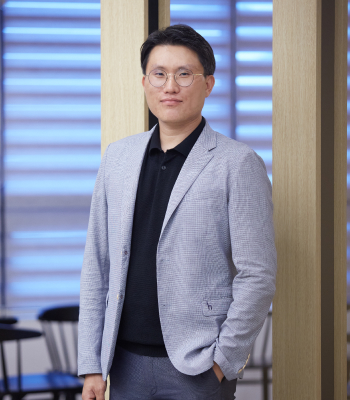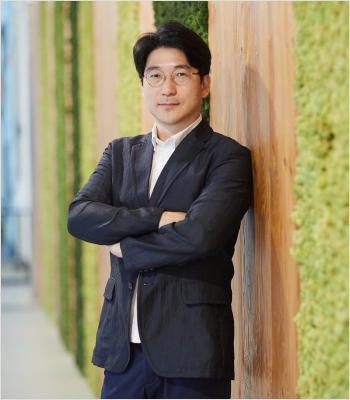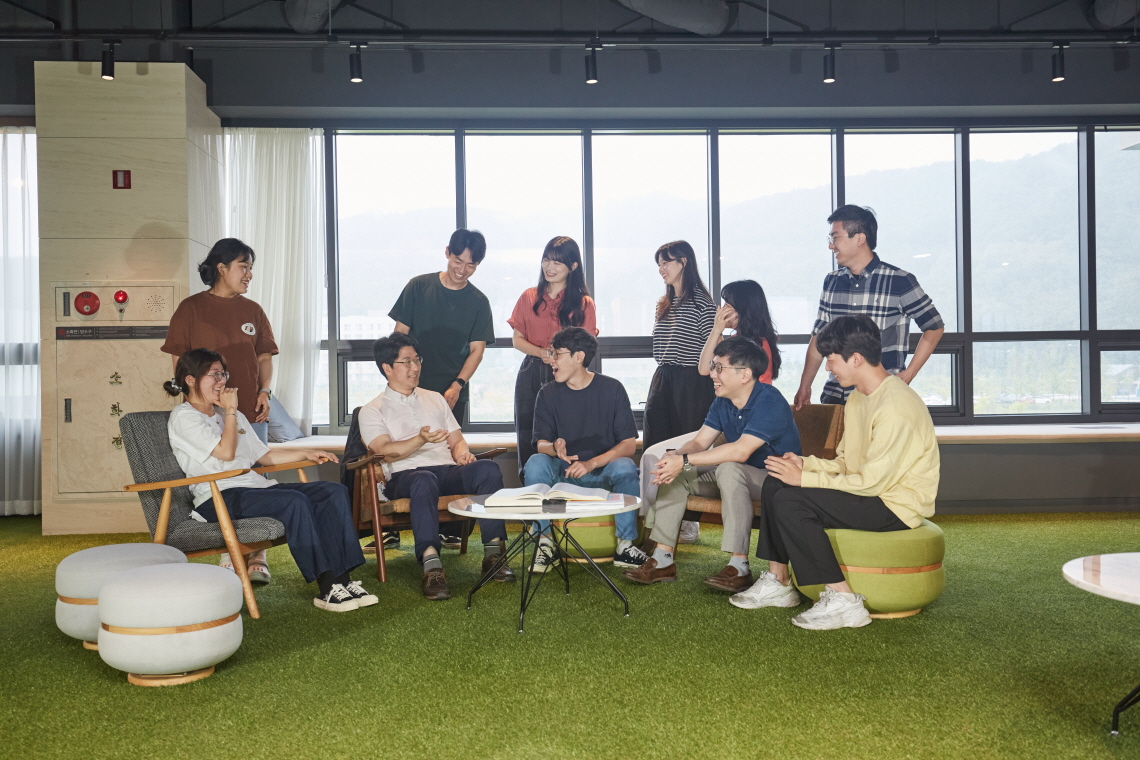mainmenu
Brain Imaging and Control Group
The structure and function of brain circuits are finely controlled in space and time to generate diverse brain
functions. Understanding the dynamic nature of brain activity and its underlying circuit and molecular mechanisms
requires tools to monitor and control specific parts of the brain (e.g. regions, circuits, cells, synapses, or
molecules). Our group monitors brain activity by employing a variety of approaches, including in vivo fluorescence
imaging, neuropixels, and molecular engineering. We also design optogenetic tools and synthetic proteins to
control specific cellular and molecular functions in the brain with high spatiotemporal precision.
In conjunction with efforts to develop novel behavior paradigms in animals, we seek to identify important
operating mechanisms at the molecule-circuit-organism level that underlie cognition and social interaction.
Communication across various scales of biological systems, from molecules to organisms, is essential for sharing information among members of society. At the molecular level, communication among a particular set of molecules is important not only to determine the functions and fates of individual cells but also to create harmonious and complex multicellular actions such as brain circuit activity that can ultimately change organisms’ behaviors. Therefore, understanding the nature of molecular communication and its impact on higher-level communication is a fundamental step toward explaining how the brain works as a whole. To achieve this, we design a variety of synthetic molecules by employing and combining naturally occurring or engineered proteins to visualize or control molecular and cellular communication in living organisms. During the last decade, we have developed genetically encoded fluorescent sensors to assess molecular interactions in live cells and visualize protein activity at the subcellular level in the brain of behaving animals. Besides molecular sensors, we have also developed a series of optogenetic tools to control diverse intracellular molecules including calcium channels, receptor tyrosine kinases, cytoskeleton proteins, and mRNAs.
We are now moving towards focusing on intercellular communication in the brain to elucidate the role of cell-cell interaction in various brain functions such as cognition, learning and memory, and social behaviors. To this end, we are developing novel molecular tools to visualize or control different types of cell-cell interactions or their molecular mediators (e.g. neuro/gliotransmitters, peptides, or proteases). We believe that these technologies will open new avenues to deepen our understanding of how molecular communication can be translated into higher-level
function in the brain and how its dysfunction causes various brain disorders
Synthetic biology, Protein engineering, Molecular optogenetics, Molecular and cellular interaction
- Optogenetic control of mRNA localization and translation in live cells, Nature Cell Biology, 2020
- Non-invasive optical control of endogenous Ca2+channels in awake mice, Nature Communications, 2020
- Intensiometric biosensors visualize the activity of multiple small GTPases in vivo, Nature Communications, 2019
- Optogenetic control of endogenous Ca2+ channels in vivo, Nature Biotechnology, 2015
- Reversible protein inactivation by optogenetic trapping in cells, Nature Methods, 2014
- 2020-Present Senior Research Fellow, IBS, Korea
- 2018-2020 Tenure-Track Research Fellow, IBS, Korea
- 2013-2017 Non-tenure track research fellow, IBS, Korea
- 2011-2013 Post-doc, KAIST, Korea
- 2020 A person of merit in the development of biological sciences, Ministry of Science and ICT, Korea
- 2016 Best Young Scientist Member(IASSF)
- 2014 6th ’Bioneer Young Investigator Award’ - Korea Society for Molecular and Cellular Biology (KSMCB), Korea
Within a close-knit social group, recognizing an individual as a unique identity and associating and retrieving individual-specific information during social interactions are fundamental abilities for living as a member of the group. Although individual recognition has been reported in many different species, including rodents, its neural underpinnings remain unclear. We have been developing simplified and precisely controlled individual discrimination paradigms in which subject mice distinguish between stimulus mice based on their individually unique characteristics. Together with quantitative behavioral measures, we use multiple state-of-art techniques, including two-photon calcium imaging, miniscope imaging, and Neuropixels recordings, to reveal neural mechanisms of social recognition.
Social information processing and memory formation, Episodic information processing, Ensemble perception
- Automating licking bias correction in a two-choice delayed match-to-sample task to accelerate learning, Scientific Reports, 2023
- Reward learning improves social signal processing in autism model mice, Cell Reports, 2023
- A quantitative analysis of spontaneous alternation behaviors on a Y-maze reveals adverse effects of acute social isolation on spatial working memory, Scientific Reports, 2023
- Dynamic and stable hippocampal representations of social identity and reward value support associative social memory in male mice, Nature Communications, 2023
- Transient effect of mossy fiber stimulation on spatial firing of CA3 neurons in familiar and novel environments, Hippocampus, 2020
- Transient effect of mossy fiber stimulation on spatial firing of CA3 neurons, Hippocampus, 2019
- Whole-cell recording in the awake brain, Cold Spring Harb Protoc, 2017
- Anesthetized- and awake-patched whole-cell recordings in freely moving rats using UV-cured collar-based electrode stabilization, Nature Protocols, 2014
- Hippocampal place fields emerge upon single-cell manipulation of excitability during behavior, Science, 2012
- 2020-Present Senior Research Fellow, IBS
- 2020-Present Associate professor, University of Science and Technology
- 2015-2020 Tenure-Track Research Fellow, IBS
- 2008-2015 Postdoc, Janelia Research Campus, HHMI, USA
- 2007 Ph.D., Physiology, Seoul National University College of Medicine, Korea
 Center for Memory and Glioscience
Center for Memory and Glioscience



 Center for Memory and Glioscience
Center for Memory and Glioscience